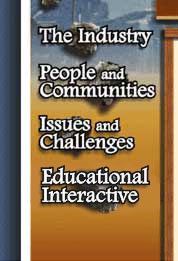 Heritage Community Foundation Presents
Heritage Community Foundation PresentsAlberta Online Encyclopedia
 |
|||
  |
|||
|
Home>> Issues and Challenges>> Labour and Politics>> Strikes>> 1919 Coal Mining Commission |
|||
| 1919 Coal Mining Commission | |||
After a period of intense labour unrest with strikes throughout the Province of Alberta's mines, a government-appointed Commission was established in spring, 1919, to study the industry. The Commission began its hearings after the Winnipeg General Strike and also after the strike in Drumheller, which lasted longer than the General Strike. Alberta miners were among the most militant and supported the UMWA and also the One Big Union. The sources of contention included conditions and hours of work, wages and job security. The Commission Chair was John T. Stirling, a Scotsman who had arrived in Canada in 1908 and had become the Chief Inspector of Mines for Alberta in 1910. He was viewed as knowledgeable and trustworthy by both industry and workers. The miners' representative was John Loughran, an Irish immigrant who had worked in the mines of the Crowsnest Pass and who was a member of the United Mine Workers of America (UMWA). Employers were represented by Walter F. McNeill, an American-born mine manager who operated from 1895 the McNeill Brothers Coal Mines in Canmore. Other representatives included Walter Smitten, a member of the Bricklayers and Stonemasons International Union and secretary of the Alberta Federation of Labour; Harvey Shaw, owner of the North West Biscuit Company and member of the Board of Trade in Edmonton. It was not just mine issues that had resulted in the industrial action. Some miners were influenced by the Russian Revolution and the coming to power of Lenin and saw themselves as a part of an international workers movement. As David Bercuson notes in his introduction to Alberta's Coal Industry, 1919 (Calgary, Alberta: the Historical Society of Alberta, 1978):
Hearings began on October 6th and lasted until November 26th and were held in the following coal mining centres:
The hearings revealed poor working and living conditions and also exploitation of miners by companies not only in over-priced company stores but also in mine camps where the food was over-priced and of poor quality. For their part, the operators denied responsibility and blamed the radicals for the problems. The Coal Mining Commission Report was issued on December 23rd, 1919. As Bercuson notes, the Report is invaluable to labour and social historians and is more than 900 typed, legal-sized pages. Bercuson has provided diverse extracts from the hearings, which capture the flavour of the testimony and the polarization of labour and management presenters. Bercuson notes:
|
|||
 |
|||
For more on coal mining in Western Canada, visit Peel’s Prairie Provinces.
